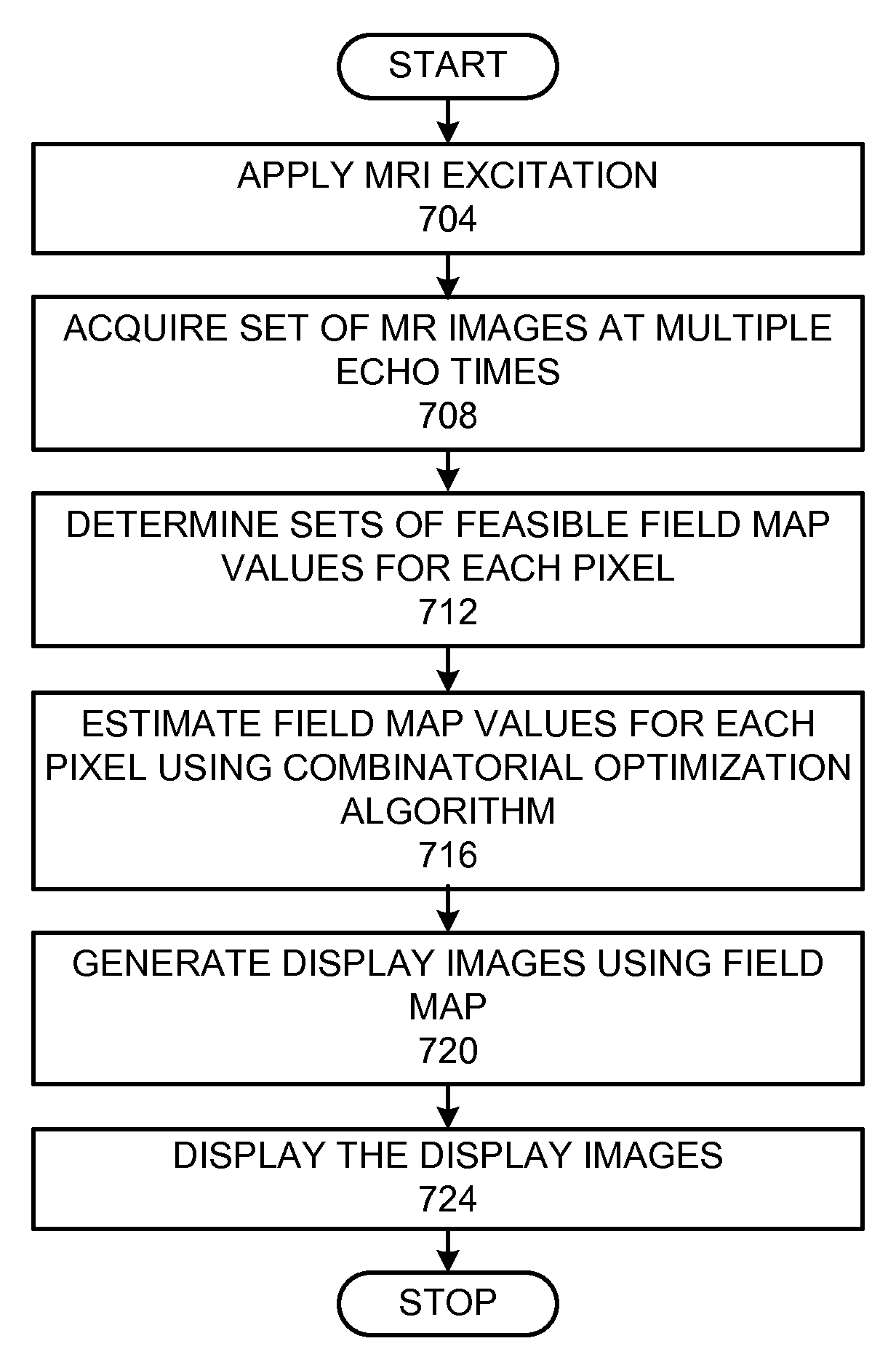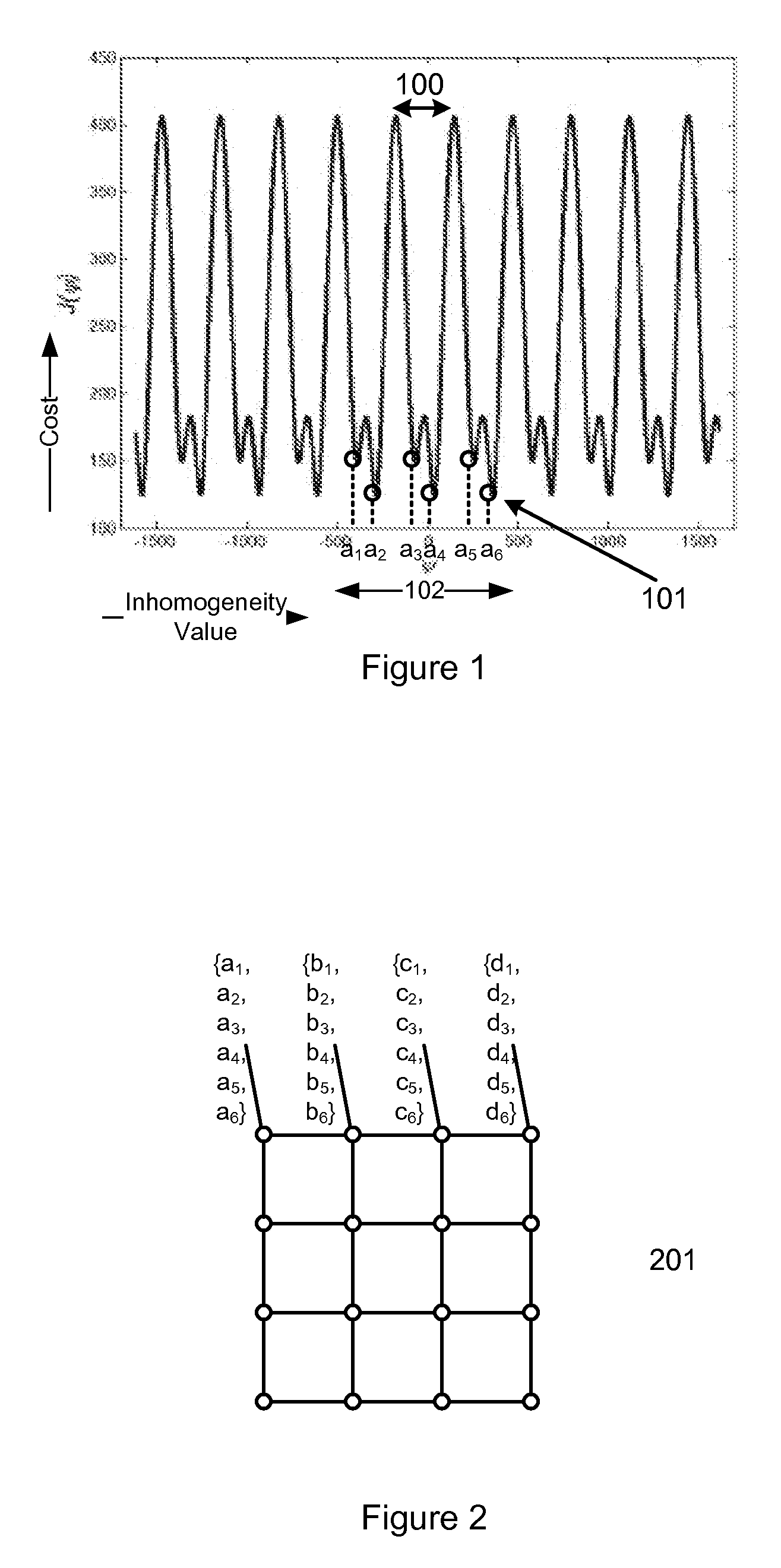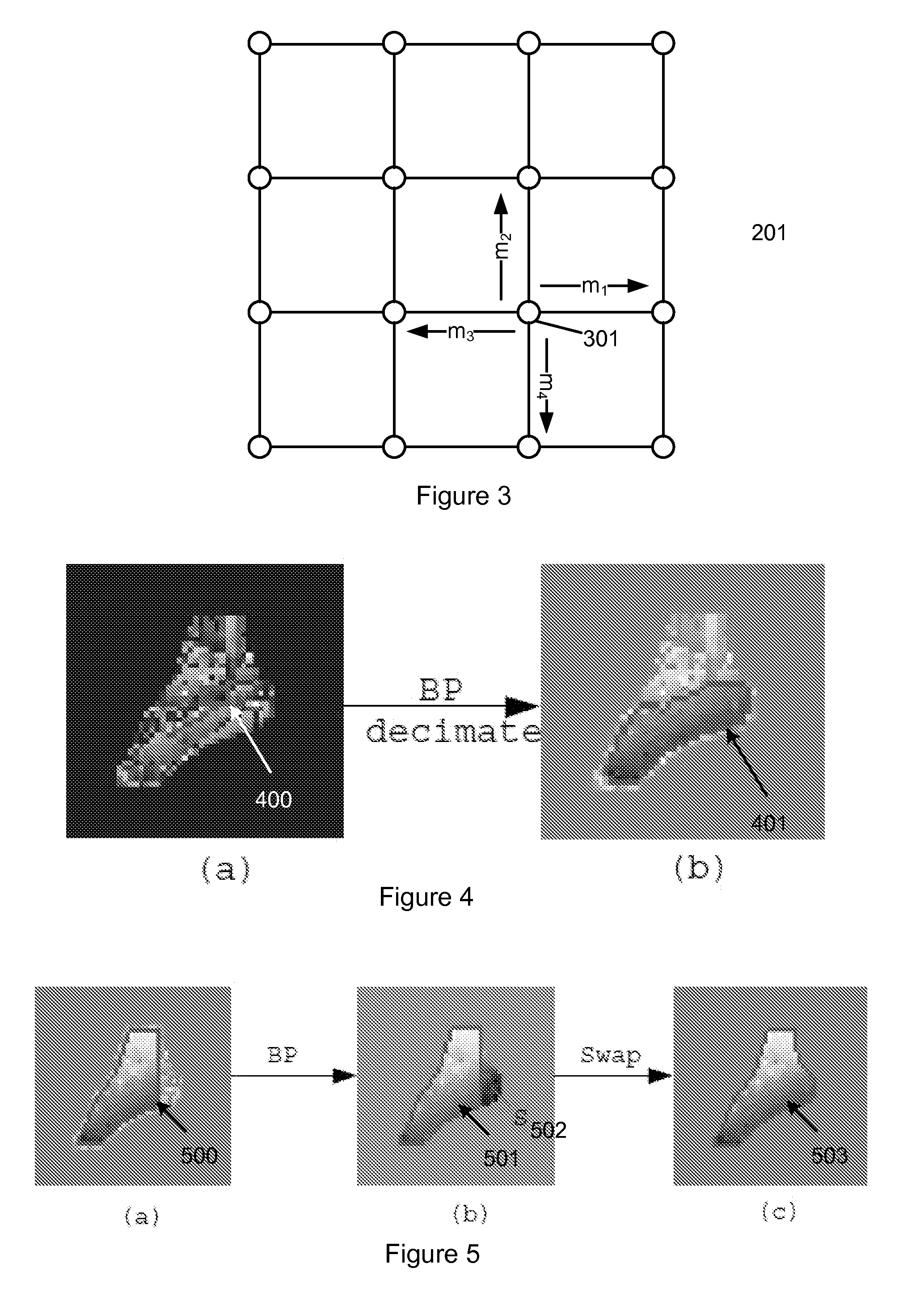Method and apparatus for field map estimation
a field map and estimation method technology, applied in the field of magnetic resonance imaging (mri), can solve problems such as degrading the diagnostic value of mr images
- Summary
- Abstract
- Description
- Claims
- Application Information
AI Technical Summary
Benefits of technology
Problems solved by technology
Method used
Image
Examples
Embodiment Construction
[0022]Compared to fat suppression methods based on spectrally-selective excitation, water-fat separation methods based on chemical-shift induced phase (also referred to as phase-sensitive water-fat separation methods), such as the 3-point Dixon method described by G. H. Glover, “Multipoint Dixon Technique for Water and Fat Proton and Susceptibility Imaging,” (J. Magn. Reson. Imaging., 1991, vol. 1, no. 5, pp. 521-530) and the IDEAL method described in U.S. Pat. No. 7,176,683 B2 and incorporated by reference herein, show better immunity to field inhomogeneities. Phase-sensitive water-fat separation estimates field inhomogeneities from multiple MR images acquired at different echo times, which is a simple case of spectroscopic imaging. The most common acquisition schemes fall into two categories, two-point and three-point acquisitions, according to the number of the acquired MR images. Three-point acquisition with flexible echo times has shown success in many clinical applications and...
PUM
 Login to View More
Login to View More Abstract
Description
Claims
Application Information
 Login to View More
Login to View More - R&D
- Intellectual Property
- Life Sciences
- Materials
- Tech Scout
- Unparalleled Data Quality
- Higher Quality Content
- 60% Fewer Hallucinations
Browse by: Latest US Patents, China's latest patents, Technical Efficacy Thesaurus, Application Domain, Technology Topic, Popular Technical Reports.
© 2025 PatSnap. All rights reserved.Legal|Privacy policy|Modern Slavery Act Transparency Statement|Sitemap|About US| Contact US: help@patsnap.com



